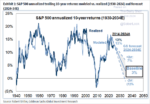The OECD purchasing power parity compares consumption prices in different countries.
Country Price level (USA = 100) Country Price level (USA = 100)
Australia 157 Korea 80
Austria 111 Luxembourg 124
Belgium 117 Mexico 64
Canada 127 Netherlands 111
Chile 73 New Zealand 126
Czech Republic 80 Norway 160
Denmark 149 Poland 59
Estonia 84 Portugal 99
Finland 127 Slovak Republic 76
France 115 Slovenia 90
Germany 107 Spain 103
Greece 100 Sweden 128
Hungary 70 Switzerland 174
Iceland 118 Turkey 56
Ireland 125 United Kingdom 132
Israel 117 United States 100
Italy 99
Japan 149
Critique:
- The index includes both tradable and non-tradable goods. Non-tradable goods must be more expensive in richer countries, because they are not exposed to global competition. Therefore, the difference between poorer and richer countries is accentuated.
- The OECD basket uses the same weights per category applied to all countries, even if the consumption basket in a richer country is different. For example the category food is 11% in Switzerland and 34% in China.
back to Purchasing Power Parity.
See more for














